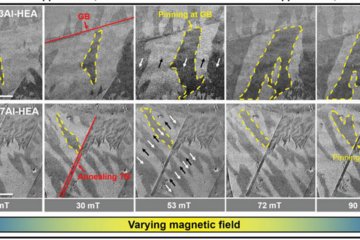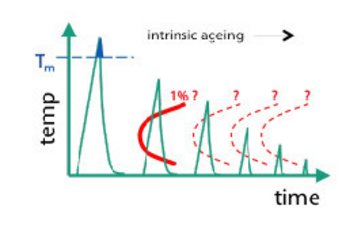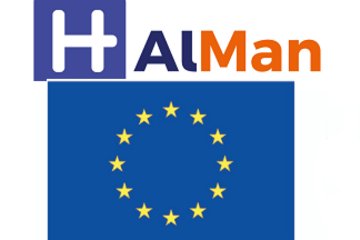All genres
101.
Talk
Ab initio simulations of charged surfaces. Workshop “High electric fields in electrochemistry and atom probe tomography", Ringberg Castle, Germany (2017)
102.
Talk
Ab initio simulations of charged surfaces. 57th Sanibel Meeting, St. Simons Island, GA, USA (2017)
103.
Talk
Chemical demixing and thermal stability of supersaturated nanocrystalline CuCr alloys: Insights from advanced TEM. MS&T '16, Materials Science & Technology 2016 Conference & Exhibition, Salt Lake City, UT, USA (2016)
104.
Talk
Ordering Phenomena in InGaN Alloys-An Ab-Initio Thermodynamics Study. International Workshop on Nitride Semiconductors (IWN2016), Orlando, FL, USA (2016)
105.
Talk
Accurate thermodynamic properties from ab initio simulations. International Conference on Theoretical and High Performance Computational Chemistry 2015, Qingdao, China (2015)
106.
Talk
Atom probe tomography study of the p-n junction in CIGS thin-film solar cells. 79th Annual Meeting of the DPG and DPG Spring Meeting, Berlin, Germany (2015)
107.
Talk
Die S/PHI/nX-Klassenbibliothek - HPC-Programmierung für Physiker. Workshop "High-performance computing und datengetriebene Anwendungen in der MPG
, Ringberg, Germany (2014)
108.
Talk
Point defects in supercells: Correction schemes for the dilute limit. Workshop on Ab-initio description of charged systems and solid/liquid
interfaces
, Santa Barbara, CA, USA (2014)
109.
Talk
Role of the defect creation strategy for modelling dangling bonds in a-Si:H. MRS Spring Meeting, San Francisco, CA, USA (2014)
110.
Talk
Defects in amorphous silicon from H insertion. Workshop "Spins as Functional Probes in Solar Energy Research", Berlin, Germany (2013)
111.
Talk
The Staebler-Wronski Effect in a-Si:H Revisited with Advanced Electron Paramagnetic Resonance (EPR). MRS Spring Meeting, San Francisco, CA, USA (2012)
112.
Talk
The Dangling-bond Defect in Crystalline and Amorphous Silicon: Insights from Ab initio Calculations of EPR-parameters. MRS Spring Meeting, San Francisco, CA, USA (2012)
113.
Talk
The dangling-bond defect in amorphous silicon: Insights from ab initio calculations of EPR parameters. DPG Frühjahrstagung 2012, Berlin, Germany (2012)
114.
Talk
Vibrational spectra of charged point defects in ionic oxides. DPG Frühjahrstagung 2012, Berlin, Germany (2012)
115.
Talk
Quantitativly optimized atomic orbitals (QUAMOLs) - SxQuamol. 1st International S/PHI/nX Developers Convention, Erkrath, Germany (2012)
116.
Talk
The dangling-bond defect in amorphous silicon: Insights from ab initio calculations of EPR parameters. 1st Austrian-German workshop on computational materials design, Kramsach, Austria (2012)
117.
Talk
Charge corrections in supercells. Workshop on "Modern developments in the ab initio description of charged systems for semiconductors and electrochemistry, Ringberg, Germany (2012)
118.
Talk
SPHInX update. 1st Austrian-German workshop on Computational Materials Design, Kramsach, Austria (2012)
119.
Talk
Point-defect energetics from LDA, PBE, and HSE: Different functionals, different energetics? 1.st Austrian/German Workshop on Computational Materials Design, Kramsach, Tyrol, Austria (2012)
120.
Talk
The dangling-bond defect in amorphous silicon: Insights from theoretical calculations of the EPR parameters. Workshop on Advanced EPR for material and solar energy research, Berlin, Germany (2011)











